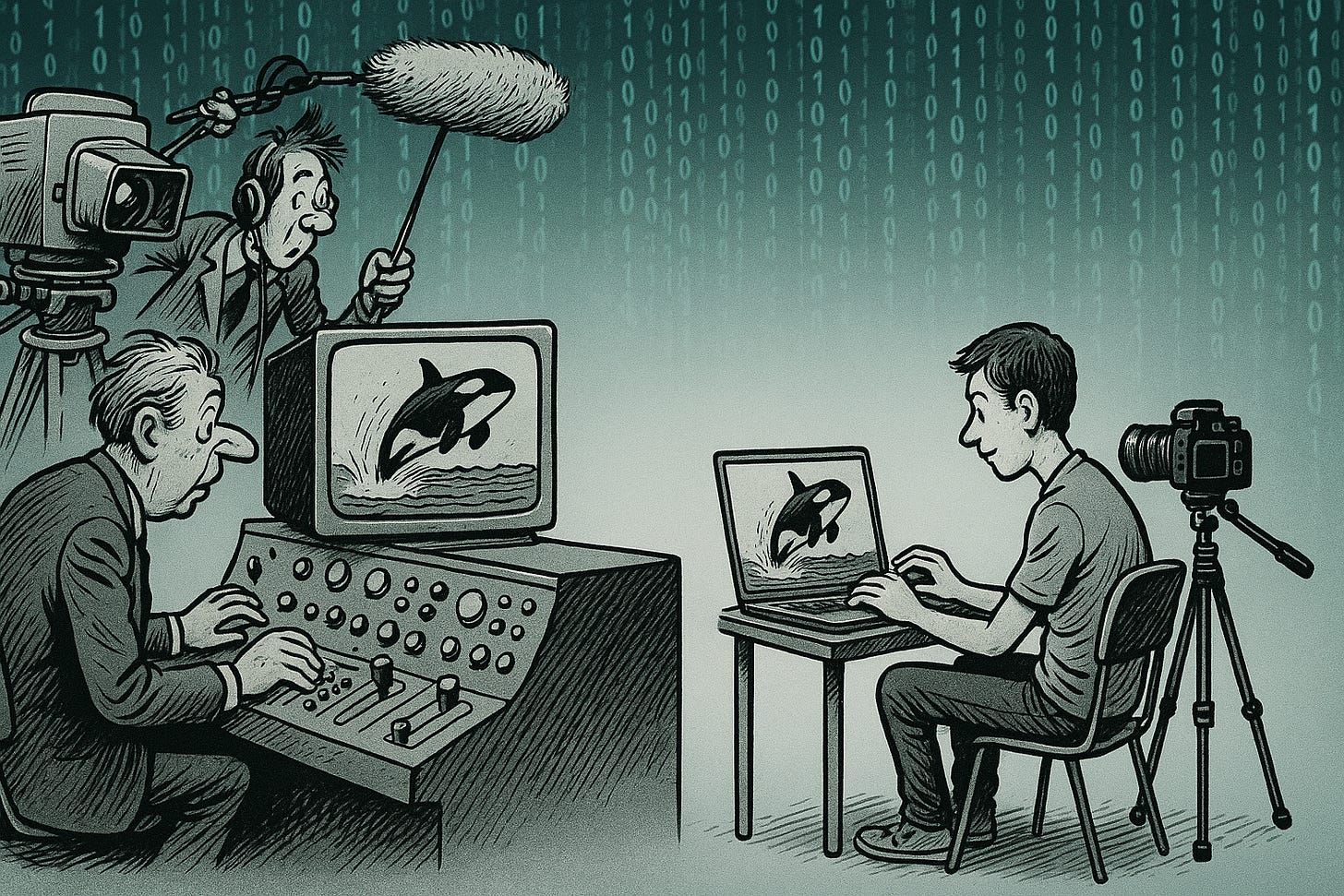1 - Broadcast Media, Wither or Whither?
What the Industry Itself Is Telling Us: Notes from the 2024 Devoncroft Report
It’s not often you get to read a broadcast industry document and see the ghost of Media Future right there, between the trend rankings and capital expenditure charts. But the 2024 Devoncroft Executive Summary - shared with industry insiders - does precisely that. In fact, it does something more valuable: it tells us that the legacy media system knows it's breaking. And it’s beginning to reassemble itself under entirely new assumptions.
At the heart of this document is a quiet admission and a strategic recalibration: legacy broadcast and media organisations are no longer configured to compete as all-in-one content creators. The cost, complexity, and speed of digital-native storytelling - especially when supercharged by AI and distributed platforms - increasingly make the old industrial model unviable.
Instead, these institutions are beginning to explore a role as platforms and publishers - infrastructures for creation and curation, rather than tightly controlled pipelines of polished content.
The Central Conflict: Inertia vs. Acceleration
Legacy broadcasters were built for scarcity: scarce channels, scarce kit, scarce expertise. But now they find themselves in an era of overabundance - of tools, of distribution, of creators, and of noise.
Here’s the conflict: how do you preserve trust, integrity, and reach in a landscape where an individual with minimal mobile equipment can make a compelling documentary in three weeks - and reach more engaged viewers than a scheduled prime-time slot?
The answer is not to compete head-on. It’s to evolve.
The Industry’s Own Evidence: Trends and Budget Priorities
According to Devoncroft’s survey of broadcasters and media vendors, the most important strategic trends shaping investment in 2024 are:
AI / ML / Generative AI: Not just experimental - already the #2 driver of capital spend.
IP-based infrastructure: Enabling production to happen anywhere, not just inside broadcast facilities.
Automated operations: Live workflows are being simplified and increasingly machine-assisted.
Multi-platform delivery: Still a top trend, albeit stabilising, as the industry leans into versioning, localisation, and streaming.
This is not a sector resisting change. It is a sector attempting to reconfigure itself - from a fortress to a network.
Case in Point: What This Looks Like on the Ground
Remote production is now standard: IP-delivery and decentralised editing mean that field teams and edit suites no longer need to be in the same city - sometimes not even on the same continent.
AI is already working in the newsroom: From transcription to summary writing and image tagging, broadcasters are using AI not as a gimmick, but to reduce human bottlenecks and increase output.
Cloud-native platforms are enabling modular collaboration: Whether in sports, entertainment, or news, the workflow is becoming modular - editors, animators, translators, producers, and AI assistants all connecting across time zones and formats.
The Rational Vector: Platforms, Not Pipelines
The solution emerging is structural. Rather than trying to do everything, media institutions are beginning to invest in doing less, better - and enabling others to do more. That means:
Hosting and amplifying creator content
Licensing trusted contributors
Offering publishing and reach infrastructure to micro-teams and specialists
Investing in AI-driven editorial workflows and content personalisation
The BBC is exploring this through its open platform and localisation strategies. CNN under Mark Thompson is moving towards digital subscription layers and talent-led verticals. The New York Times has become an ecosystem: investigative journalism, podcasts, games, recipe apps, and external acquisitions like Wirecutter and The Athletic.
What all of this signals is a slow but definite pivot to a publisher–platform hybrid model.
What the Industry Needs to Learn
The transformation underway is not only technical - it is philosophical. The media business must rethink:
Who gets to make the messages that audiences turn into meaning
What constitutes authority
How editorial control is distributed
What value institutions offer in a decentralised, creator-driven economy
If these organisations can shift from control to coherence - if they can become curators, enablers, and editors of trust - they may not just survive the transition. They may actually lead it.
The challenge isn’t to out-produce the creator economy. It’s to build the infrastructure that allows creators, audiences, and machines to converge with purpose, clarity, and ethical depth.
This article forms a reference point for starting a wider multi-part series on the future of media and creative work. The direction is clear. The timeline is accelerating. The only question left is: who adapts with grace - and who doesn’t?
Coming Next: 2 - The Evolution of Legacy Media
In part three, we explore how editorial judgment works when there’s no one left in the tower. How do creators - and audiences - decide what’s worth keeping, cutting, and releasing?
This is part of Media Unmade - a series about how media breaks, reforms, and adapts in the age of AI and creator autonomy.
💬 Add your thoughts in the comments. Subscribe to follow the series. Let’s see where this thing’s going.


